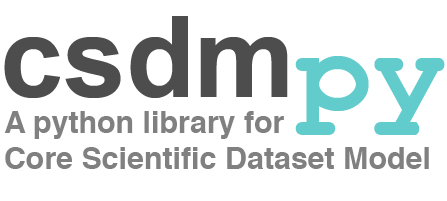An emoji 😁 example¶
Let’s make use of what we learned so far and create a simple 1D{1} dataset. To make it interesting, let’s create an emoji dataset.
Start by importing the csdmpy package.
>>> import csdmpy as cp
Create a labeled dimension. Here, we make use of python dictionary.
>>> x = dict(type="labeled", labels=["🍈", "🍉", "🍋", "🍌", "🥑", "🍍"])
The above python dictionary contains two keys. The type key identifies the dimension as a labeled dimension while the labels key holds an array of labels. In this example, the labels are emojis. Add this dictionary to the list of dimensions.
Next, create a dependent variable. Similarly, set up a python dictionary corresponding to the dependent variable object.
>>> y = dict(
... type="internal",
... numeric_type="float32",
... quantity_type="scalar",
... components=[[0.5, 0.25, 1, 2, 1, 0.25]],
... )
Here, the python dictionary contains type, numeric_type, and components key. The value of the components key holds an array of data values corresponding to the labels from the labeled dimension.
Create a csdm object from the dimensions and dependent variables and we have a 😂 dataset…
>>> fun_data = cp.CSDM(
... dimensions=[x], dependent_variables=[y], description="An emoji dataset"
... )
>>> print(fun_data.data_structure)
{
"csdm": {
"version": "1.0",
"description": "An emoji dataset",
"dimensions": [
{
"type": "labeled",
"labels": [
"🍈",
"🍉",
"🍋",
"🍌",
"🥑",
"🍍"
]
}
],
"dependent_variables": [
{
"type": "internal",
"numeric_type": "float32",
"quantity_type": "scalar",
"components": [
[
"0.5, 0.25, ..., 1.0, 0.25"
]
]
}
]
}
}
To serialize this file, use the save() method of the
fun_data instance as
>>> fun_data.dependent_variables[0].encoding = "base64"
>>> fun_data.save("my_file.csdf")
In the above code, the components from the
dependent_variables attribute at index zero, are
encoded as base64 strings before serializing to the my_file.csdf file.
You may also save the components as a binary file, in which case, the file is serialized with a .csdfe file extension.
>>> fun_data.dependent_variables[0].encoding = "raw"
>>> fun_data.save("my_file_raw.csdfe")
